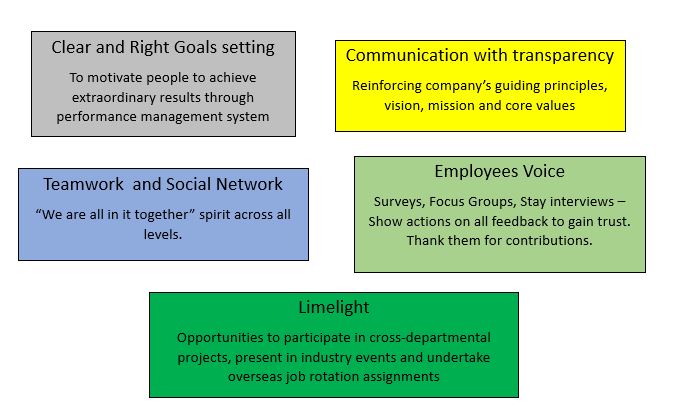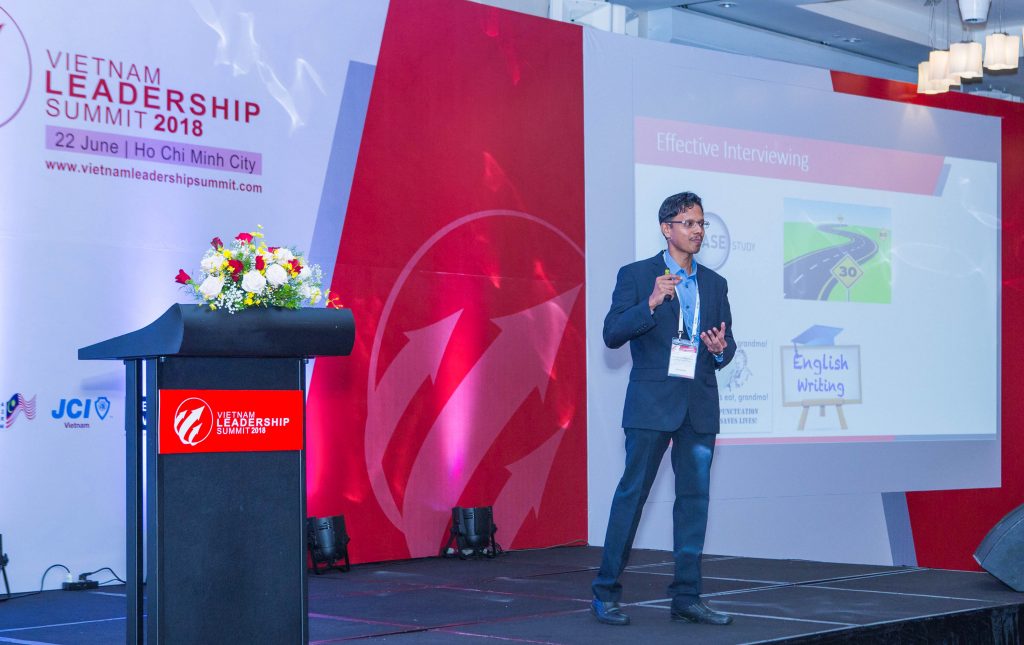Organizational crisis is a broad area and my primary focus in this article is on leaders rising up to and powering through various forms of crisis – be it – a joint venture or merger or acquisition, disruption by elements of industry 4.0 and economic or industry related dynamics. I will discuss further on the right leadership qualities and leadership styles necessary to lead in crisis.
In the VUCA world (Volatile, Uncertain, Complex, Ambiguous), ability to adapt to new situations is a necessary skillset. Leaders need to instil AQ (Adaptive Quotient) in their workforce. With industry 4.0, disruptions are changing the business landscape at lightning speed and if leaders don’t facilitate the change fast enough, they are paving the way to get displaced. Creativity and Innovation should become the holy grail of the organization.
Leaders need to lead decisively and competently to gain the credibility and trust from their workforce. They need to exercise sound judgment in their decision making. A charismatic leader, if also an articulate ambassador, can inspire the workforce and set a clear direction for the organization whilst ensuring everyone is aligned with the vision, mission and core values. The leader not only leads by example but also strives to learn from the ground. Like what Jack Ma alludes, if you understand the problems, you will come up with innovative solutions. The closer the leader is to the floor, the more detailed the leader will know of the issues and challenges and even the best possible ideas from the workforce.
Rob Weinhold and Kevin Cowherd in their book “The Art of Crisis Leadership” note that leaders should accept reality, not distort the truth (don’t leave out the vital facts) and share the whole truth with stakeholders that include shareholders. In Asia where there’s a “mianzi” habit (“save the face or reputation” in Chinese), leaders might be even withholding critical information. Leaders who don’t practice the required transparency especially in times of crisis, ultimately end up becoming underlying reasons for decline in shareholder value.
Gisli Olafsson in the book “The Crisis Leader”, articulates the importance of effective delegation and training the workers so that they know how to make decisions under pressure. Delegating without proper enablement can be catastrophic and hence an organization wide training and development is extremely crucial.
All I have talked about highlight the strategic importance of attracting right and safe talents, integrating them into the company and developing them to surpass business KPIs. Only then, the leaders can heighten the effectiveness of their workforce. PeopleHR’s studies discovered that 90% of executives understand the importance of engagement but only 50% understand how to address the issue. PeopleHR further found out that only 13% of employees are “highly engaged” and that’s disturbing.
Why engagement is low? Reasons include organizational culture misfit, lack of alignment with company’s vision, lack of open communication between leaders and employees, employees not empowered to contribute, lack of clarity in employee’s role and how their role contributes to the company’s success and no due recognition given to employees. What companies are doing now to address this?

Are these sufficient to address the plunging engagement levels?
What else can leaders do?
1. Attracting the right and safe talents
There are techniques for this that include:
** Effective interviewing leveraging Artificial Intelligence (AI)
** Value-adding rounds to the entire candidate selection – candidates walk through their 30-60-90 days plan, work through a case study (simulated business case), get tested on professional writing skills with email scenarios and present a business plan
** Background checks (www.avvanz.com/screen)
** Profiling their behaviours at a restaurant or pub or even at the golf course
2. Integrating the workforce
This is beyond the typical orientation or induction. It’s about integrating the new joiners (and even existing employees) with powerful tools like bite-sized programs pushed out to the employees’ mobiles. It could cover what they need to know about vision, mission, core values, organizational structure, management team, HR policies, business model and so on. Using technologies have proven to be more interactive and help to deepen the understanding rather than forming a classroom of new joiners and trying to orchestrate the entire “employee integration”. This age-old practice is cumbersome, costly and not consistent.
3. Training and developing the workforce
Leaders should utilize blended learning throughout the organization encompassing classroom training (in person or virtual), digital learning (via desktop or mobile) and highly interactive learning leveraging augmented reality (VR/AR). Coaching, Mentoring and Cross-Training to understand other departments’ disciplines and KPIs should be part of the learning journey. The digital learning technology can be highly interactive with social learning aspects, gamification and facilitate idea generation.
In conclusion, leadership through crisis and then to lead an highly engaged and effective workforce is in the hands of the leader along with the organizational assets – the people.



